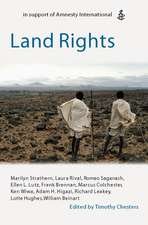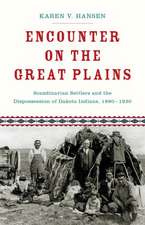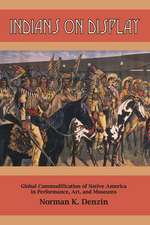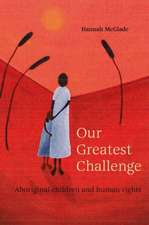Living on Mangetti: `Bushman' Autonomy and Namibian Independence: Oxford Studies in Social and Cultural Anthropology
Autor Thomas Widloken Limba Engleză Hardback – 13 ian 2000
Din seria Oxford Studies in Social and Cultural Anthropology
- 34%
 Preț: 1111.67 lei
Preț: 1111.67 lei - 34%
 Preț: 1009.01 lei
Preț: 1009.01 lei - 34%
 Preț: 1037.58 lei
Preț: 1037.58 lei - 24%
 Preț: 281.37 lei
Preț: 281.37 lei - 34%
 Preț: 745.33 lei
Preț: 745.33 lei - 34%
 Preț: 685.31 lei
Preț: 685.31 lei - 34%
 Preț: 572.66 lei
Preț: 572.66 lei - 34%
 Preț: 611.39 lei
Preț: 611.39 lei - 34%
 Preț: 573.32 lei
Preț: 573.32 lei - 30%
 Preț: 530.36 lei
Preț: 530.36 lei - 34%
 Preț: 932.93 lei
Preț: 932.93 lei - 34%
 Preț: 861.56 lei
Preț: 861.56 lei - 34%
 Preț: 1329.37 lei
Preț: 1329.37 lei - 34%
 Preț: 1067.04 lei
Preț: 1067.04 lei - 34%
 Preț: 577.20 lei
Preț: 577.20 lei - 34%
 Preț: 702.71 lei
Preț: 702.71 lei - 34%
 Preț: 881.69 lei
Preț: 881.69 lei - 34%
 Preț: 669.15 lei
Preț: 669.15 lei - 31%
 Preț: 443.30 lei
Preț: 443.30 lei - 34%
 Preț: 963.21 lei
Preț: 963.21 lei - 34%
 Preț: 792.97 lei
Preț: 792.97 lei - 34%
 Preț: 1431.87 lei
Preț: 1431.87 lei - 34%
 Preț: 1199.73 lei
Preț: 1199.73 lei - 31%
 Preț: 340.67 lei
Preț: 340.67 lei - 34%
 Preț: 1147.99 lei
Preț: 1147.99 lei - 23%
 Preț: 165.41 lei
Preț: 165.41 lei - 31%
 Preț: 393.49 lei
Preț: 393.49 lei - 34%
 Preț: 1023.00 lei
Preț: 1023.00 lei - 18%
 Preț: 330.21 lei
Preț: 330.21 lei - 22%
 Preț: 161.73 lei
Preț: 161.73 lei
Preț: 1213.67 lei
Preț vechi: 1846.22 lei
-34% Nou
Puncte Express: 1821
Preț estimativ în valută:
232.24€ • 243.09$ • 193.29£
232.24€ • 243.09$ • 193.29£
Carte tipărită la comandă
Livrare economică 19-25 martie
Preluare comenzi: 021 569.72.76
Specificații
ISBN-13: 9780198233893
ISBN-10: 0198233892
Pagini: 312
Ilustrații: 14 halftones, 21 figures, 13 tables, 2 maps
Dimensiuni: 163 x 242 x 22 mm
Greutate: 0.6 kg
Editura: OUP OXFORD
Colecția OUP Oxford
Seria Oxford Studies in Social and Cultural Anthropology
Locul publicării:Oxford, United Kingdom
ISBN-10: 0198233892
Pagini: 312
Ilustrații: 14 halftones, 21 figures, 13 tables, 2 maps
Dimensiuni: 163 x 242 x 22 mm
Greutate: 0.6 kg
Editura: OUP OXFORD
Colecția OUP Oxford
Seria Oxford Studies in Social and Cultural Anthropology
Locul publicării:Oxford, United Kingdom
Recenzii
As a practice-orientated ethnography, Living on Mangetti is highly successful and presents a good example for anthropologists in search of a new way of writing ethnography without creating cultures as discrete and bounded entities. It is rich in ethnographic detail, methodologically sophisticated and penetrating in its analyses, and it offers a stimulating theoretical approach. It deserves to be widely read, not just by "Bushmen" connoisseurs but also by anthropologists who find themselves tempted by the call to abandon generalization.
Living on Mangetti is an ethnographic monograph that subtly escapes the alleged pitfalls of general ethnographic description without giving in on analytical generalizations ... it demonstrates very clearly that anthropological monographs have something to offer which history, political economy, or social geography cannot provide.
Living on Mangetti is an ethnographic monograph that subtly escapes the alleged pitfalls of general ethnographic description without giving in on analytical generalizations ... it demonstrates very clearly that anthropological monographs have something to offer which history, political economy, or social geography cannot provide.














